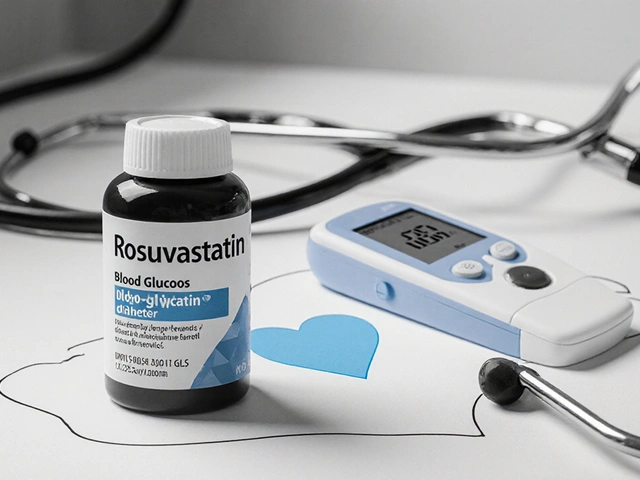Metformin: The Diabetes Drug Unveiling Weight Loss Similar to Exercise
In an era where the global population is grappling with the dual epidemic of obesity and diabetes, a groundbreaking discovery has emerged from the labs of Stanford Medicine and Harvard Medical School. The research has unearthed a pivotal link between metformin, a widely prescribed drug for type 2 diabetes, and a mechanism that leads to weight loss, similar to the effects observed after high-intensity exercise. This fascinating finding has the potential to revolutionize treatment protocols for managing obesity and diabetes.
Metformin has been a cornerstone in the treatment of diabetes for decades, primarily for its efficacy in lowering blood sugar levels. However, its role in weight management has always been observed yet not fully understood. The recent study illuminates this aspect by revealing the presence of a specific molecule, lac-phe, which plays a crucial role in appetite suppression post-exercise. Remarkably, this molecule's levels were found to increase significantly in both mice and humans upon treatment with metformin.
In a series of experiments, researchers administered metformin to mice with diet-induced obesity and tracked their food intake and weight. Over nine days, these mice exhibited a notable reduction in food consumption and lost approximately two grams of body weight. This effect underscores metformin's potential to mimic the natural weight loss mechanism triggered by vigorous physical activity.
The research further extended its inquiry to human subjects with diabetes. Patients under metformin treatment for twelve weeks showed elevated levels of lac-phe, aligning with the results observed in the laboratory mice. This parallel not only reinforces the drug's capability to induce weight loss but also highlights its significance in managing diabetes more holistically, beyond just glucose control.
Understanding the molecular pathways through which metformin exerts its weight-reducing effects is paramount. It seems that this medication activates the same biological circuitry involved in exercise-induced weight loss. This discovery opens up new avenues for therapeutic intervention, particularly for individuals who are unable to engage in regular physical activity due to health constraints. By potentially mimicking the beneficial effects of exercise, metformin could serve as a critical tool in addressing the obesity epidemic, improving the quality of life for millions living with diabetes.
Furthermore, these findings raise intriguing questions about the interactions between metabolic treatments and physical activity. The identification of lac-phe as a mediator in this process provides a tangible target for future research, aiming to develop more effective treatments for weight management. It also underscores the importance of interdisciplinary approaches in medical research, combining insights from pharmacology, molecular biology, and exercise physiology to tackle complex health challenges.
This breakthrough could represent a paradigm shift in how we perceive and manage metabolic diseases. As the research community delves deeper into the implications of this discovery, there remains a cautious optimism about the potential of medications like metformin not just as treatments but as preventive measures against obesity and diabetes. However, it is crucial to remember that drugs are only part of the solution. A holistic approach, incorporating lifestyle modifications such as diet and exercise, remains the cornerstone of effective management and prevention of these conditions.
In conclusion, the landmark discovery linking metformin to exercise-like weight loss effects opens new horizons in our fight against obesity and diabetes. It serves as a reminder of the intricate connections between our body's metabolic processes and the potential to harness these mechanisms for therapeutic gains. As research progresses, the hope is that findings like these will pave the way for innovative treatments, making conditions like obesity and diabetes less daunting in the future.






5 Comments
Debra Johnson
October 24 2025Metformin, as elucidated by recent Stanford‑Harvard collaboration, appears to orchestrate a cascade of metabolic events that remarkably echo the physiologic aftermath of high‑intensity interval training; this observation, while exciting, demands a measured appraisal, for the allure of a pharmacologic shortcut should not eclipse the foundational tenets of lifestyle modification. The investigators have identified lac‑phe, a molecule previously associated with post‑exercise appetite suppression, and demonstrated its elevation following metformin administration in both murine models and human subjects; this mechanistic insight, albeit preliminary, invites a re‑examination of the drug’s pleiotropic effects. One must consider, however, that the mouse data, derived from a nine‑day feeding study, reported a modest two‑gram weight decrement-a change that, while statistically notable, may not translate into clinically meaningful outcomes for the heterogeneous human population grappling with obesity. Moreover, the human arm of the study, limited to a twelve‑week exposure window, documented heightened lac‑phe levels without a concomitant rigorous analysis of long‑term weight trajectories, energy expenditure, or body composition alterations; such omissions temper enthusiasm, underscoring the necessity for expansive, longitudinal trials. Ethically, the prospect of positioning metformin as an exercise surrogate could engender complacency, whereby patients might eschew physical activity, thereby forfeiting the myriad cardiovascular, psychosocial, and musculoskeletal benefits inherent to regular movement. From a pharmacoeconomic perspective, widespread off‑label utilization of metformin for weight loss would impose additional burdens on healthcare systems, despite the drug’s relatively low cost, because monitoring for potential adverse effects-gastrointestinal upset, vitamin B12 deficiency, lactic acidosis in susceptible individuals-remains imperative. Nonetheless, for individuals incapacitated by severe comorbidities, the drug’s capacity to modestly attenuate appetite could constitute a valuable adjunct, especially when synergized with dietary counseling and behavioral interventions. It is also worth noting that the lac‑phe pathway intersects with other neuroendocrine axes, suggesting that future therapeutics might target this axis more directly, potentially yielding greater efficacy with fewer systemic repercussions. In sum, while the data illuminate a fascinating convergence between metformin pharmacodynamics and exercise physiology, they should be interpreted with caution, humility, and a steadfast commitment to holistic patient care.
Andrew Wilson
October 31 2025Look, we gotta be real about this-metformin's not some magic bullet that’ll let you skip the gym and still drop the pounds. Sure, the study shows a spike in that fancy lac‑phe thing, but definetly don’t think you can just pop a pill and expect a six‑pack. People need to stay active, eat right, and not rely on a single drug to fix everything. It’s great that researchers are digging deeper, but we cant let hype replace hard work! Keep your expectations in check, and use the med as an aid, not a crutch.
Kristin Violette
November 8 2025Colleagues, this discovery invites a multidisciplinary dialogue. The lac‑phe augmentation observed with metformin suggests a pharmacodynamic modulation of the central melanocortin system, which aligns with the neuroendocrine feedback loops governing satiety. From a therapeutic lens, integrating metformin into a broader obesity management protocol could enhance metabolic homeostasis, particularly when coupled with dietary micronutrient optimization and structured resistance training. However, we must interrogate the dose‑response relationship and the inter‑individual variability in lac‑phe synthesis, potentially mediated by polymorphisms in the ALDH1A1 gene. Future investigations should employ a systems‑biology approach, leveraging metabolomics and transcriptomics to map the downstream effectors of lac‑phe signaling. Moreover, patient education remains paramount; we should empower individuals to view pharmacotherapy as a complement to, not a replacement for, lifestyle modifications that improve insulin sensitivity and cardiovascular resilience. In practice, clinicians could monitor lac‑phe levels as a biomarker to personalize metformin dosing, thereby fostering a precision‑medicine paradigm in obesity care.
Theo Asase
November 16 2025Enough with the sanitized press releases! This so‑called "breakthrough" reeks of a covert agenda by the global pharmaco‑elite to keep the masses complacent. They want us to believe that a little pill can mimic the heroic toil of exercise, while the real power brokers sit comfortably, siphoning profits. Metformin may raise lac‑phe, sure, but who's funding the research? Big Pharma loves the narrative that you can outsource health to a tablet, ensuring a perpetual dependence on their products. Wake up, citizens! The true solution lies in reclaiming personal sovereignty-moving, eating whole foods, and rejecting the seductive lure of pharmaceutical quick‑fixes that serve only to tighten their grip on our bodies.
Joey Yap
November 24 2025Reading through this study, I’m reminded of the delicate balance between science and empathy. While the data on lac‑phe is compelling, it’s essential to honor each individual's journey with diabetes and obesity. Some may find a glimmer of hope in metformin’s added benefits, especially those whose physical limitations make traditional exercise challenging. Yet, we must also foster a supportive community that encourages gentle movement, mindful eating, and compassionate self‑care. Let us not reduce people to biochemical pathways but rather view them as whole beings navigating complex health landscapes.